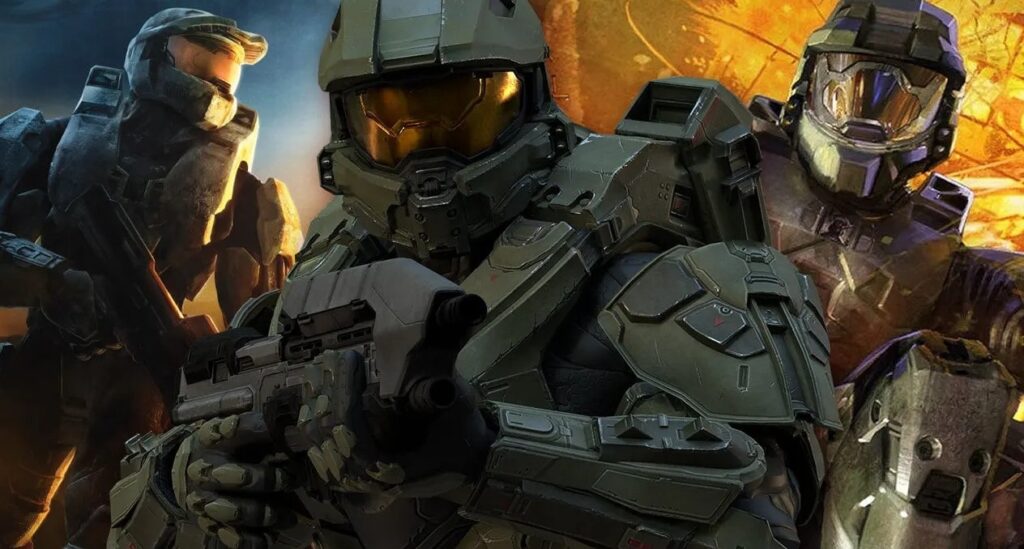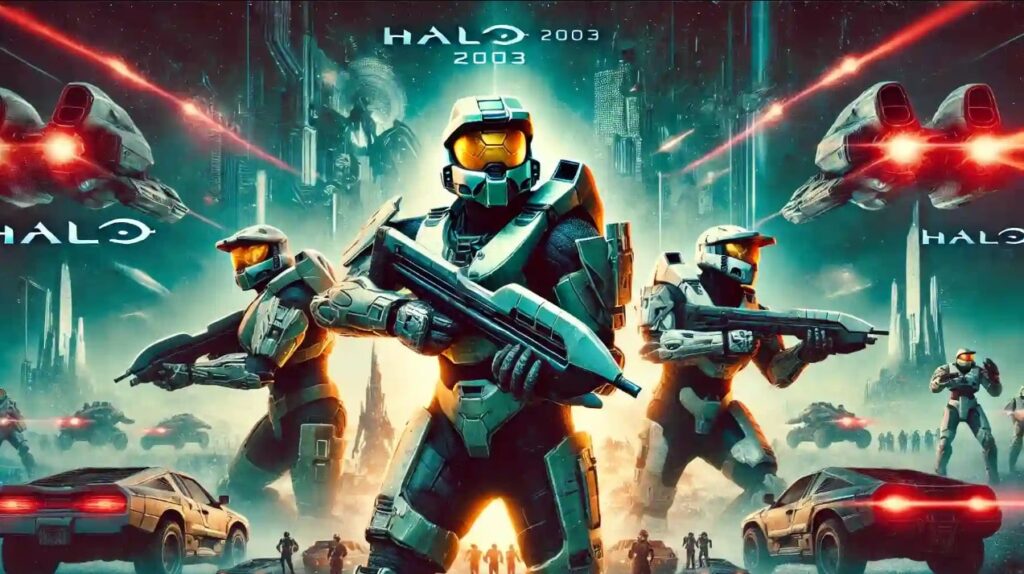Halo (2003) game icons banners video game are recognizable visual components that greatly influenced the game’s legacy. These graphics, which were created with simplicity and clarity, created a powerful narrative contrast by successfully communicating the game’s themes and factions, such as the extraterrestrial Covenant and the military United Nations Space Command (UNSC). The banners and insignia were crucial in drawing players into Halo’s world and promoting both multiplayer identity and campaign narrative. Players were able to customize their accounts with customizable banners, which increased player engagement. These graphics also established a benchmark for subsequent games, fusing practicality and visual appeal while influencing more general trends in gaming design.
Table of Contents
The Importance of Game Banners in Gaming Culture
Master Chief, the Covenant, or those exciting multiplayer games could be the first things that come to mind when we think about Halo. But the game’s symbols and banners are also essential to its success. Players’ initial impressions are formed by game banners, which provide a preview of the journey they are going to go on halo (2003) game icons banners. In the case of Halo (2003) game icons banners, the visuals contributed to creating suspense and establishing the mood of the action-packed, future universe. These banners were noticeable when players passed retail displays or browsed through their game libraries. However, why? Their symbolism, color palette, and design all provide the solution.
Simple Yet Powerful: The Halo Logo
The emblem, which was frequently shown prominently on game banners, was one of Halo’s most distinctive branding components. Halo (2003) game icons banners involving space exploration and high-tech combat were wonderfully balanced by the sleek, metallic typography of the word “HALO” over a dark, starry backdrop. Despite its simplicity, the design conveys a lot about the type of experience gamers were expecting. Deep blue and black hues alluded to the immense unknowns of space, while metallic textures and illuminating accents gave the logo a futuristic vibe.
The Visual Storytelling in Halo Banners

The game Halo (2003) game icons banners for Halo provided a tale in addition to showcasing awesome characters and sophisticated weaponry. In Halo: Combat Evolved, each banner included a scenario that alluded to the epic conflicts and depth of emotion that were to come. The famous photo of Master Chief standing halo (2003), for instance, is more than simply a nice image. It depicts gaming symbols banners on a battlefield, looking off into the horizon. It alludes to themes of isolation, willpower, and the burden of accountability—all of which are crucial to the game’s plot.
Making something aesthetically pleasing is only one aspect of this type of visual storytelling. The goal is to connect emotionally with the gamer before theypick up the controller. Halo (2003) game icons banners for game icons
The Role of Color and Contrast in Halo Icons
The Halo (2003) game icons banners use of color was another crucial component that contributed to their effectiveness. The banners had a dramatic, nearly cinematic feel to them because of the sharp contrasts between light and dark, with vivid blues and greens piercing deep blacks. These colors were intended to arouse particular emotions rather than being picked at random (Halo, 2003).
The deeper hues spoke to danger and intrigue, while the blues and greens indicated a cold, alien environment. In addition to being visually striking, this color scheme supported the concepts of exploration, warfare, and survival seen in the Halo (2003) game symbols and banners.
The Iconography of Master Chief
It would be impossible to discuss Halo’s banners and emblems without mentioning Master Chief, the game’s main character. For good cause, the character’s visage became linked with the Halo (2003) game icons and banners. You knew you were going to have an adventure every time you saw his helmet.
It was a wise choice to place Master Chief at the center of most banners. His commanding presence served to both symbolize the fierce fighting in the game and solidify his status as a Halo franchise icon. Eventually, seeing his recognizable armor came to symbolize everything Halo stood for: bravery, fortitude, and the ability to overcome insurmountable obstacles.
How Halo Set the Standard for Future Game Banners
Prior to Halo (2003) game icons banners were either gaudy titles or generic pictures of the main character. However, Halo demonstrated to the industry how much more these visual components might be. Not only did the Halo (2003) game icons banners iconography banners look amazing, but they also enhanced the whole gaming experience by fusing compelling storylines with stunning graphics.
Since then, the gaming industry has adopted this strategy as the gold standard. Halo’s effect can be seen in every AAA game released today. Developers are increasingly aware that a well-designed symbol or banner may create buzz, develop a brand, and—above all—help players feel more connected to the game.
Evolution of Halo’s Iconography in Later Releases
The banners and iconography for subsequent games in the series continued to change, even though Halo: Combat Evolved established the scene. The graphic design increased in complexity along with the tale and the stakes. More dynamic stances, bigger set pieces, and a stronger feeling of urgency were all introduced by the banners for Halo 2 and Halo 3. The essential components stayed the same in spite of these modifications. The sense of immensity and isolation persisted, with Master Chief still taking center stage, color palettes that still significantly emphasized blues, greens, and blacks, and the Halo (2003) game symbols banner. Halo (2003) game icons banners. This coherence contributed to the development of a powerful visual identity for the Halo series.
Why These Banners Resonate with Fans

Even though Halo: Combat Evolved was published over 20 years ago, fans still find resonance in the banners and emblems from that time period. Since many gamers have pleasant recollections of their initial exploration of the Halo ring, this is partly due to nostalgia. However, it’s also because these banners were meticulously designed. Halo’s banners stand out for their subtlety and emotional depth at a time when gaudy visuals and extravagant designs are sometimes the main attraction. They provided us a cause to be interested in what transpired in the game, not simply a Halo (2003) game icons banners game symbols.
Wrapping Up
Why, therefore, do the game symbols and banners from Halo Halo (2003) game icons banners still have an impact? The reason for this is that they were artistic creations rather than merely promotional items. In a single image, they invoked feelings, created a story, and encapsulated the spirit of the game. It’s hard to overlook the artistry that went into these recognizable images, regardless of how long you’ve been a fan or how recently you’ve discovered the series. Give a Halo banner a quick glance the next time you see one. Halo (2003) banner of game icons How does it affect your emotions? How does it relate to the topics of the game? There may be more going on than first appears.


